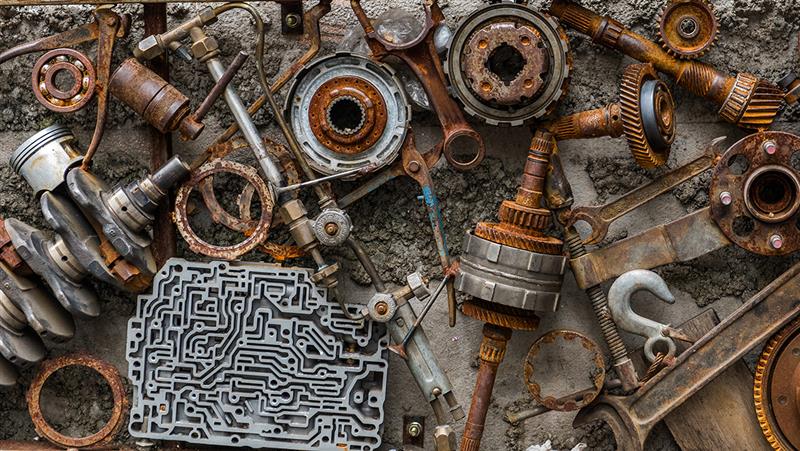Common practice among the on-highway trucking, construction, mining, forestry, agriculture, crane, and heavy-machinery based industries is to scrap slow-moving inventory, but by doing this companies risk damaging their customer’s loyalty.
The main reason older obsolete inventory is scrapped is to make room for newer and faster-moving inventory. Large heavy-machinery parts for older equipment is often scrapped because they require a significant amount of warehouse space to house. When a business scraps inventory they are sacrificing long-term customer satisfaction to improve their short-term goal of inventory reduction. Scrapping parts can create distrust between the customer and the original manufacturer. When parts are scrapped, a company is decreasing the supply of available replacement parts. This results in increased prices and lead time since the OEM will need to manufacture the parts on an as-needed basis.
Increased lead time results in increased downtime for the customer, which may affect their bottom line. Airports and trucking companies keep track of their equipment’s downtime. “Vehicle off Road” (VOR) and “Aircraft on Ground” (AOR) are metrics that are used by trucking companies and airlines to track their equipment’s efficiency. Downtime is a loss of revenue for these companies as broken equipment offers them nothing. Downtime to construction companies can be even more detrimental; when necessary equipment for the current step is not operational, progress for the whole project could come to a halt until the equipment is repaired or replaced. If a construction company is on a strict schedule, equipment downtime could incur penalties (depending on their contract) if it results in a delay of project completion.
When a business attempts to minimize downtime and they need a replacement part for their equipment, they will be forced to make a difficult decision. Do they pay for the more expensive OEM replacement part that could take 2 weeks before it arrives, or do they buy an after-market part that can arrive in a few days but may void their warranty? Heavy machinery is a large investment for many businesses and if a business has trouble ordering parts for it after only 5 to 6 years of owning it, they may factor that into their decision on future equipment purchases.
Selling your slow-moving and excess inventory to Lippert allows you to keep the inventory available to your customer while simultaneously meeting short-term inventory reduction goals such as: freeing up capital, providing cash flow, lowering operating costs, freeing up warehouse space, improving margins/profitability, and reducing taxes. This minimizes risk of long-term negative effects that result from inventory reduction by reducing future conflict between your supply chain and demand chain. With the inventory still available to your customers, their products will have a longer lifespan which can increase their satisfaction and loyalty. Why scrap obsolete inventory when Lippert’s model provides more cash flow and provides resources for long-term success?
